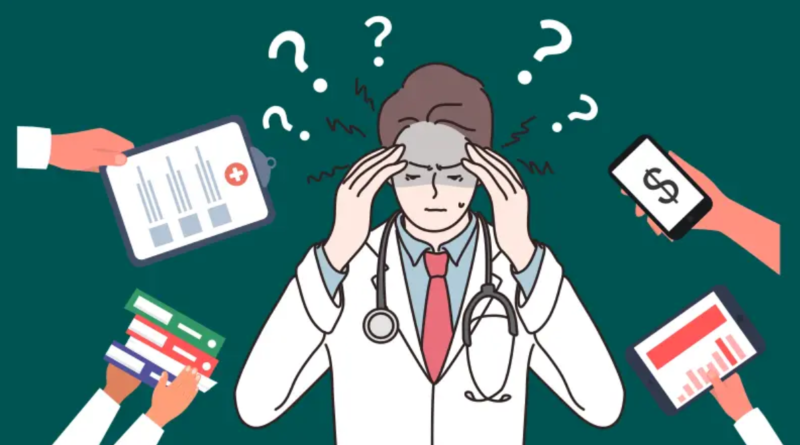Title – Insurance Eligibility Verification Process In Healthcare
Insurance eligibility verification is when a medical billing team works out whether a patient will be covered by their insurance and how much financial liability they will have for their medical expenses. Timely verification (often before the scheduling of services) can improve the experience for both the patient and the healthcare provider.
When it comes to healthcare providers, insurance eligibility verification tells them how much a patient will owe them after they receive the service, which makes the collection of payments easier. It helps them bill the insurance companies quickly and leads to better claim rates. As far as the patients are concerned the verification helps them understand the cost of the service. They can then plan their medical journey accordingly.
Verified insurance is thus a key component of revenue cycle management. It is crucial for healthcare providers so that their claims are accepted without delay. Without a verified insurance process you might find that you’re providing services to patients who are not covered by insurance and your claims are denied because you did not have authorization to begin the services. You might also find it difficult as a healthcare provider to educate your patients on their liability.
The Importance of Insurance Eligibility Verification
When a patient comes in to avail a service, having a good insurance eligibility verification process in place helps you tell them exactly what they can expect to pay for the concerned service. You being upfront and clear with the patient, even before their treatment has begun, is something that patients appreciate because it helps them plan out their expenses and saves them from hidden costs. You are also able to determine whether the patient’s claim will be approved by the insurance company.
Benefits of an Effective Insurance Eligibility Verification Process
Financial Transparency
The most important benefit for the patient is that they become aware of their financial liability before the service has been provided. This is very helpful for them because they can then effectively plan out their payments and not have to face any unexpected costs.
Reduced Administrative Errors
Administrative errors can be costly for the healthcare provider. Confusion or lack of clarity in the submission process can lead to denials. Employing an effective and verified insurance eligibility process will minimize any errors that might creep in. Doing this will ensure successful claims and a more robust revenue management system.
How to verify medical insurance eligibility?
Here are some of the key steps to an effective and efficient insurance eligibility verification process;
Collecting Patient Information
This is the first step of the process and involves gathering information about the patient that is relevant to the claim process. This includes data like their name, date of birth, address, previous conditions, and insurance provider.
Policy Verification
The patient’s policy is then examined. Details such as what type of coverage they have and if there are any exceptions are looked into. The patient must have active insurance that covers all their costs before the services are provided.
Network Verification
If you, as a healthcare provider, are within the insurance company’s network of preferred providers – your patients are more likely to get their claims without any extra costs. This also makes the claims process easier and minimizes denials.
Coverage Verification
If the medical services that are requested by the patient are covered under their insurance plan, then the healthcare provider’s medical billing team identifies it at this stage. Coverage verification will tell the healthcare provider and the patient just how much of the service is eligible for reimbursement and help them avoid hidden or missed costs.
Challenges in the Insurance Eligibility Verification Process
The importance of a robust insurance eligibility verification process can’t be overstated – but it also comes with certain challenges that need to be met with proper care to avoid problems later on.
Complex Plans
Working to verify eligibility can entail expense and loss of time. This is because insurance plans are often complex and differ greatly in the kind of benefits and coverage they provide. A lot of data has to be sifted through to get a clear picture of the plan and determine its eligibility.
Human Error
The insurance claims process involves a lot of fine print that needs to be carefully attended to to ensure effective claims. Relying on manual entry of data can lead to errors that can prove costly later on.
Up-to-date information
Insurance policies are dynamic. They are always changing and evolving. It is essential that healthcare providers have up-to-date information about the policies and coverages. The healthcare providers must give their patients, so that the patients can make informed decisions.
How Technology is Changing the Game
In the age of artificial intelligence, technology is simplifying and streamlining the insurance eligibility verification process. Automation plays a key role in today’s verified insurance industry and is reducing the costs associated with traditional methods of verification. Technology is being used to;
Automate Verification
By automating the verification process, healthcare providers can easily minimize the problems arising from manual data entry and clerical errors. They can rest assured that no claim will be disputed because of miscommunication. This also frees up staff to focus on patient care.
Access Real-Time Information
Tech helps healthcare providers access real-time information about policies and the claims process. This ensures that healthcare providers and their patients receive up-to-date information about policies and claims.
Cost Effective
Automating tasks also reduces costs and helps healthcare providers provide a more efficient and cheaper verification process.
Financial Transparency
Patients are given the advantage and benefit of a transparent insurance eligibility verification process that is easy to interact with at every stage and doesn’t intimidate them.
As technology continues to advance, the insurance eligibility verification process will likely become even more streamlined, benefiting both patients and providers alike.




